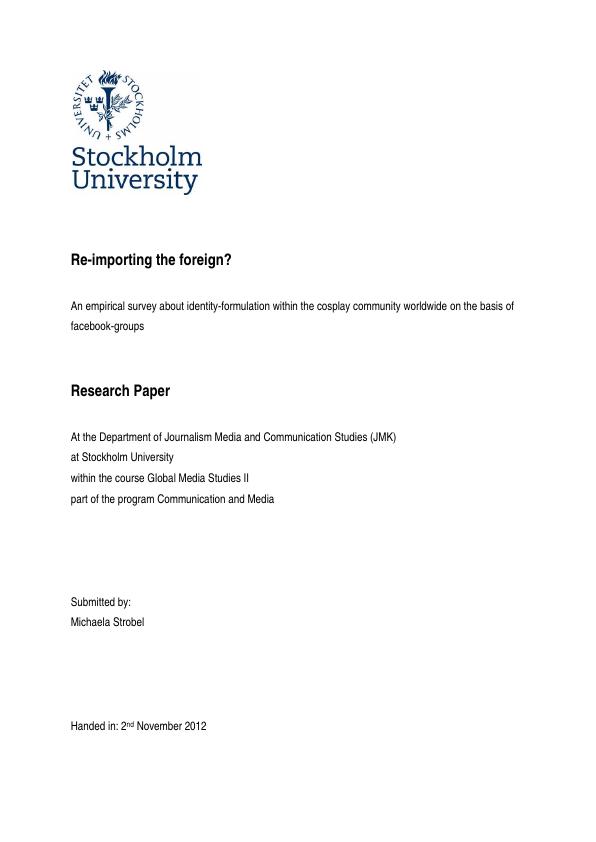Despite the growing importance of economies outside the ‘western’ hemisphere (Thussu, 2007: 28), the scholarly discourse within media science is still unceasingly revolving around the issue of ‘Western’ hegemony. This is mainly concerning two aspects of media: structures and content. While on the structural (MacBridge Report 1980 (Hafez, 2007: 80)), financial (Thussu, 2007: 27) and institutional (Cottle, 2009: 30) side a dominion of US-American (Vu, 2012), Australian (Hafez, 2007: 173) or European (Hillard, 2009) media corporations is still observable – although translational interlinkages, mergers and complex shareholder-structures make it increasingly hard to detangle (Hafez, 2007: 159) – research on the content-level is starting to look for more democratic models. The ‘core periphery’-approach (Galtung, 1971) is slowly being reassessed, yet the ‘flow’-model (Thussu, 2007: 11) still postulates that the major influence is coming from ‘the North’ flowing towards the economic ‘South’ (Cottle, 2009: 29), only being challenged by minor ‘contra-flows’ (Thussu, 2007: 20) of niche products which find some fans among sub-cultures in the ‘Western’ society. That those flows could interweave at some point and take on ‘hybrid’ (Thussu, 2007: 20) forms, is only recognized to take place at the receiving end. This can for example refer to the evolution of a certain kind of ‘German’ reggae or ‘Chinese’ rock music. Hybrids almost never happen on the structural level of pre-modeled content, e.g. ‘Who wants to be a millionaire’ has the same look, sound and rules all over this planet. Thus amalgam media products are primarily developing in a more active media use. This kind of media use can contribute to the emergence of trends or sub-cultures. Aligning with Fiske (Fiske, 1987), I am daring the thesis that it is less important who is controlling the buttons behind the media corporations (structures), but it gives much more information how people are actually using this output (content) and produce meaning (Storey, 2001: 175) if we want to find out, how globalized this world is within the media (Storey, 2001: 190). As a starting point I will therefore take a sub-culture, evolved from media content flowing in the less frequented direction of ‘East’ to ‘West’: cosplay. And as the contemporary medium of choice concerning self-expression, the Internet appears to be the appropriate study subject.
Inhaltsverzeichnis (Table of Contents)
- Introduction
- What is cosplay? Context.
- Cosplay = Hybrid media-use.
- Cosplay = An 'Imagined' Community.
- Where is cosplay? Insights
- Cosplay needs media.
- Cosplay on facebook.
- What is cosplay? Outlook.
- Cosplay = Not re-importable
- Cosplay = Not only Asian
- Cosplay=One global culture.
Zielsetzung und Themenschwerpunkte (Objectives and Key Themes)
This paper investigates the potential re-importation of a cultural product, cosplay, back to its country of origin. It analyzes the role of media in shaping and disseminating this subculture, and explores how the global cosplay community interacts and creates meaning through online platforms like Facebook.- The influence of media on the formation of global subcultures
- The concept of cultural hybridity and re-importation
- The role of online platforms in facilitating community building and identity formation
- The significance of "imagined communities" in shaping cultural identity
- The potential for cultural exchange and influence between different regions of the world
Zusammenfassung der Kapitel (Chapter Summaries)
- Introduction: The chapter introduces the concept of "Western" media hegemony and critiques the traditional "core periphery" approach to understanding global media flows. It argues for a more nuanced understanding of how media content is used and interpreted in different cultural contexts, focusing on the emergence of subcultures and hybrid forms of cultural expression.
- What is cosplay? Context.: This chapter examines the concept of cosplay as a hybrid media phenomenon that challenges traditional notions of cultural dominance. It questions whether cultural products can be re-imported back to their country of origin and explores the role of media in shaping the perceptions and interpretations of cosplay within different cultural contexts.
- Where is cosplay? Insights: The chapter discusses the role of media, particularly Facebook, in facilitating the global spread of cosplay. It examines how cosplay communities leverage online platforms to build connections, share information, and cultivate a sense of shared identity.
Schlüsselwörter (Keywords)
This research paper focuses on the concepts of cosplay, media hegemony, cultural hybridity, re-importation, imagined communities, and online platforms like Facebook. The analysis explores the intersection of these concepts in the context of global media flows and the formation of a transnational subculture.- Citation du texte
- Michaela Strobel (Auteur), 2012, Re-importing the foreign?, Munich, GRIN Verlag, https://www.grin.com/document/204116



